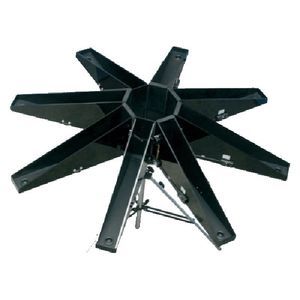
Rat operant conditioning system LE870for micefor animal researchpassive avoidance
Add to favorites
Compare this product
Characteristics
- Animal type
- for rats, for mice
- Applications
- for animal research
- Type
- passive avoidance
- Configuration
- benchtop
Description
Fear-motivated tests classically used to assess short-term or long-term memory on small laboratory animals
Presentation
The inhibition of innate or learned behaviour by association with aversive stimulation has shown to be a very useful tool for researchers working in very different fields. From the study of the interference of drug treatments on a simple learning model to the study of the physiological mechanisms beneath learning or memory, passive avoidance reflexes studies have been used.
Many models have been proposed for these studies. However, among those most widely used, that suggested by Kurtz & Pearl in 1960 (J. Comp Physiol. Phycol. 53:201-6) and later modified by Bures & Buresova (J. Comp. Physiol. Phycol. 56:268-62, 1963) is proven. In this model, sometimes called ‘One-trial learning’, ‘Two-compartment test’ or ‘Memory test’ it is intended to inhibit, by aversive stimulus, the rodents tendency to abandon large, open and brightly illuminated spaces so as to hide in small dark ones.
Operating principle
The model has a set of variables of easy determination and control (i.e. entrance to the small compartment latency), offering, at the same time, an ample parameters spectrum whose effect can be studied (v. gr. the interval between the aversive stimulation and the retention test).
Passive Avoidance studies can be carried out by means of an experimental chamber that comprised of two differently sized enclosures, a big white one and a small black one, according to the original design.
Catalogs
No catalogs are available for this product.
See all of Bioseb‘s catalogsRelated Searches
- Analysis software
- Thermometer
- SpO2 monitor
- Control software
- Digital thermometer
- Laboratory software
- Windows software
- Automated software
- Infrared thermometer
- Monitoring software
- Electronic ventilator
- Acquisition software
- Tracking software
- Non-contact thermometer
- Portable ventilator
- Recording software
- Vital signs monitoring device
- Probe thermometer
- Digital control unit
- Compact pulse oximeter
*Prices are pre-tax. They exclude delivery charges and customs duties and do not include additional charges for installation or activation options. Prices are indicative only and may vary by country, with changes to the cost of raw materials and exchange rates.

















